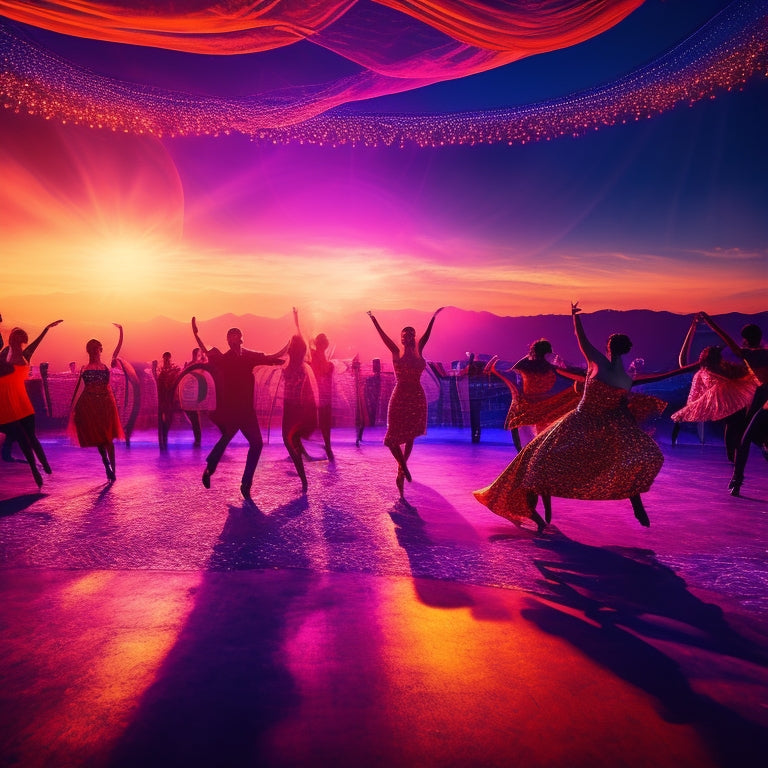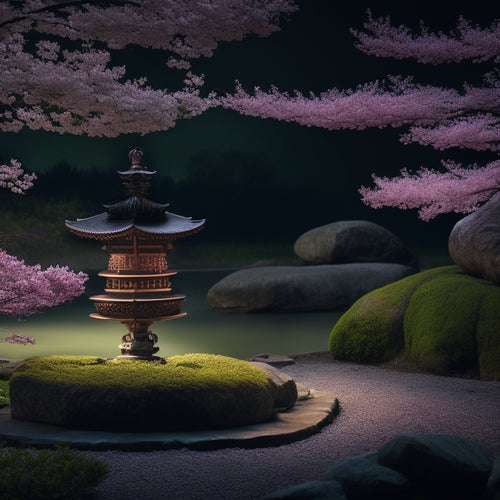
Unveiling the World of Dance: Your Guide
Share
Dance is a multifaceted art form that encompasses a rich history, diverse techniques, and a wide range of styles. From its roots in ancient ritualistic movements to the development of ballet, modern, and contemporary dance, the evolution of dance reflects societal values, emotions, and creativity. Mastering dance techniques requires strength, flexibility, and coordination, while understanding musicality helps convey emotion and expression. With various styles, each with unique characteristics and requirements, dancers can explore a diverse world of dance. As we explore the complexities of dance, we'll uncover the intricacies of this enchanting art form, revealing the beauty and elegance that lies within.
Key Takeaways
• Dance is a multifaceted art form with cultural roots in ancient ritualistic movements, evolving over time to captivate modern audiences.
• Mastering dance techniques requires strength, flexibility, and coordination, with precision and control essential for perfecting movements.
• Various dance styles, including ballet, hip-hop, and more, offer distinct characteristics and movements, with cultural significance and artistic expressions.
• Performance in dance demands a deep understanding of musicality, rhythm, and tempo, with mastery of techniques contributing to overall expression.
• Regular dance practice offers physical benefits like improved strength and flexibility, as well as mental benefits like enhanced creativity and emotional expression.
Exploring Dance History
Throughout human history, dance has been an integral part of cultural expression, evolving from ancient ritualistic movements to diverse styles that continue to captivate audiences today.
With prehistoric origins rooted in ritual and celebration, dance has traversed a remarkable journey.
The Renaissance marked a significant turning point, introducing ballet as a refined and elegant art form. This evolution of ballet paved the way for future generations, influencing the development of modern and contemporary dance forms in the 20th century.
As dance continues to evolve, it remains an indispensable aspect of human culture, reflecting societal values, emotions, and creativity.
Mastering Dance Techniques
Dance techniques, comprising a wide range of movements and exercises, serve as the foundation upon which various dance styles are built, requiring dancers to develop strength, flexibility, and coordination to master them.
Perfecting pirouettes, for instance, demands precision and control, while improving flexibility enables dancers to execute movements with ease.
To enhance performance, dancers must understand musicality, interpreting rhythm and tempo to convey emotion and expression.
Navigating Dance Styles
With a strong foundation in dance techniques, dancers can now explore and navigate the diverse world of dance styles, each with its unique characteristics, requirements, and artistic expressions.
The dance evolution has led to the development of various genres, each with its cultural significance. From ballet's precision and grace to hip-hop's dynamic energy, each style has its distinct characteristics. Understanding these differences is important for dancers to master their craft.
Frequently Asked Questions
How Do I Overcome Stage Fright and Performance Anxiety?
To overcome stage fright and performance anxiety, employ breathing exercises to calm the nervous system, practice positive self-talk and mindfulness techniques, and utilize calming mantras and visualization strategies to boost confidence and alleviate anxiety.
What to Wear to a Dance Class or Performance?
When selecting dance attire, prioritize comfort, flexibility, and functionality. Opt for breathable, moisture-wicking fabrics, and consider fashion essentials like fitted tops, leggings, or tights, and dance shoes that support your chosen style, ensuring confidence and freedom of movement.
Can I Learn Dance if I Have No Prior Experience?
Like a seedling sprouting in fertile soil, anyone can learn dance with no prior experience, but flexibility limits and personal motivation are essential; cultivating discipline and persistence yields growth, even for the novice dancer.
How Do I Balance Dance With Other Hobbies and Responsibilities?
To balance dance with other hobbies and responsibilities, prioritize time management by scheduling conflicts in advance, allocating realistic practice sessions, and setting achievable goals, ensuring a harmonious integration of dance into your multifaceted lifestyle.
What Are the Physical and Mental Health Benefits of Dancing?
"Dancing yields numerous physical and mental health benefits, countering the misconception that it's merely a hobby. It enhances cardio fitness, mindfulness meditation, and stress relief, while fostering body awareness, emotional expression, social connection, muscle tone, and bone density."
Related Posts
-

Elevate Your Dance Makeup Business Online
You're one step away from taking your dance makeup business global. A professional online presence is key, with 75% o...
-

What Makes a Stunning Lyrical Dance Makeup Look?
You craft a stunning lyrical dance makeup look by balancing ethereal, emotive essence with subtle, shimmering accents...
-

Unleash the Secrets of Shinobi: Genesis Manual
The Shinobi: Genesis Manual is a treasured resource for enthusiasts, offering an in-depth exploration into the intric...


